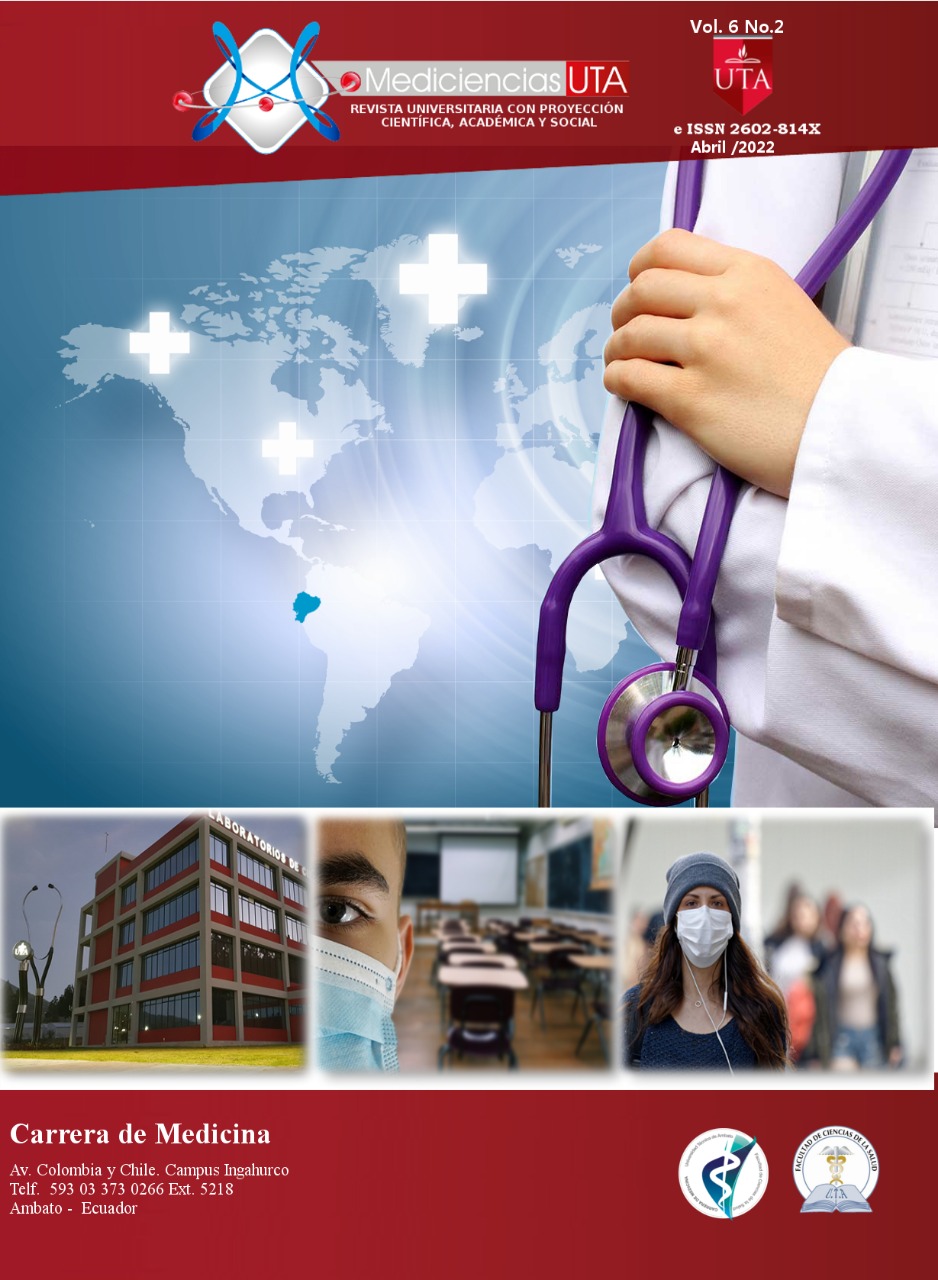Radiological findings on chest radiography and tomography in patients diagnosed with sars-cov-2 pneumonia. Bibliographic review
Main Article Content
Abstract
Introduction: As there was an increase in the number of suspected cases of COVID-19 during the initial stages of the pandemic, the availability of RAPD-PCR tests was exceeded. When it was determined that the respiratory system is the main system affected by the SARS-CoV-2 virus, it was decided to request imaging tests, which currently have become an important tool for the diagnosis of the infection, even in patients who have presented false positives in the RAPD-PCR test. after an increment of suspicious cases of COVID-19 during the initial stages of the pandemic, the readiness of tests RAPD-PCR was surpassed because the breathing system is the main affected by SARS-CoV-2, it was requested image tests, the same ones that at the present time have been constituted as an important tool for the diagnostic of the infection, even in patients that presented false positive in the test RAPD-PCR. Objective: Determine the main radiological chest manifestations in patients with SARS-CoV-2 pneumonia, as well as the evolution of pathological findings in the different stages of the disease or after clinical improvement. Methodology: A systematic review of scientific articles published by medical journals collected in digital platforms, such as, Medigraphic, Scielo, ScienceDirect, Pubmed, clinicalKey, from the year 2019 and 2020, in Spanish and English languages was performed. Systematic reviews with or without analysis and observational studies evaluating radiological findings in patients presenting with SARS-CoV-2 pneumonia were included. Articles that used a pediatric population for their study were excluded. Results: It was evidenced that the most frequent discoveries in the simple x-ray of thorax were the focal opacities in burnished glass, consolidation areas, interstitial patterns or interstitial acinares and confluent alveolar opacities or in patches. On the other hand, in the computerized tomography of thorax opacities were evidenced in burnished glass, consolidations and the one denominated patron crazy paving. Also, it was demonstrated that this image study possesses a bigger sensibility and specificity, The most frequent findings in plain chest radiography were focal ground-glass opacities, areas of consolidation, interstitial or acinar interstitial patterns and confluent or patchy alveolar opacities. On the other hand, ground-glass opacities, consolidations and the so-called crazy paving pattern were evidenced in the chest computed tomography. In addition, it was demonstrated that this imaging study has a higher sensitivity and specificity, because it allows identifying the alterations that occur in the early stages of pneumonia caused by SARS-CoV-2. Conclusions: The frequent findings in chest radiography have a peripheral and subpleural location, they also present as basal, posterior and usually bilateral alterations, they correspond to visible peripheral areas of ground-glass pattern and few areas of consolidation. In computed tomography the mixed pattern predominates, which is characterized by ground-glass, consolidations and the Crazy-Paving or cobblestone pattern.
Downloads
Article Details

This work is licensed under a Creative Commons Attribution-NonCommercial-ShareAlike 4.0 International License.



